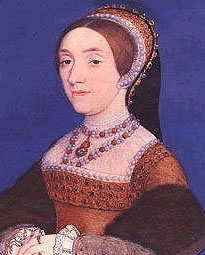 On the 30th June 1541, Henry VIII and Catherine Howard, his fifth wife, set off from London on their royal progress to the North. Royal progresses allowed the monarch to escape London in the summer months when disease was rife and it was also good PR, but this progress also had two other aims: the meeting of Henry and his nephew, James V of Scotland, which was due to take place in September in York, and also “to emphasise the extent of his defeat of the Pilgrims [from the Pilgrimage of Grace] and the Percy interest, and to humiliate utterly all but the most clearly loyal elements”1
On the 30th June 1541, Henry VIII and Catherine Howard, his fifth wife, set off from London on their royal progress to the North. Royal progresses allowed the monarch to escape London in the summer months when disease was rife and it was also good PR, but this progress also had two other aims: the meeting of Henry and his nephew, James V of Scotland, which was due to take place in September in York, and also “to emphasise the extent of his defeat of the Pilgrims [from the Pilgrimage of Grace] and the Percy interest, and to humiliate utterly all but the most clearly loyal elements”1
Unfortunately, James V did not turn up to the meeting, but Henry VIII definitely reminded the people of Yorkshire who was boss and who was in control. Henry, however, was not in control of his wife, who spent the progress having secret assignations with Thomas Culpeper, a member of her husband’s privy chamber. The couple were able to meet at night in Lincoln, Pontefract and York, and how were actually nearly discovered when Anthony Denny arrived at Catherine’s room to fetch her to the King but found her door locked. Another man had beat the King to Catherine that night!
You can read more about Catherine Howard in the following articles:-
- The Marriage of Henry VIII and Catherine Howard – Gives details on Catherine’s life.
- Thomas Culpeper
- The Fall of Catherine Howard
- The Executions of Catherine Howard, Jane Boleyn, Francis Dereham and Thomas Culpeper
- Catherine Howard – The Material Girl?
- Jane Boleyn: The Infamous Lady Rochford
Notes and Sources
- “Henry VIII’s Progress Through Yorkshire in 1541 and its Implications for Northern Identities”, Tim Thornton, 2009. Northern history: a review of the history of the North of England., 46 (2). pp. 231-244.